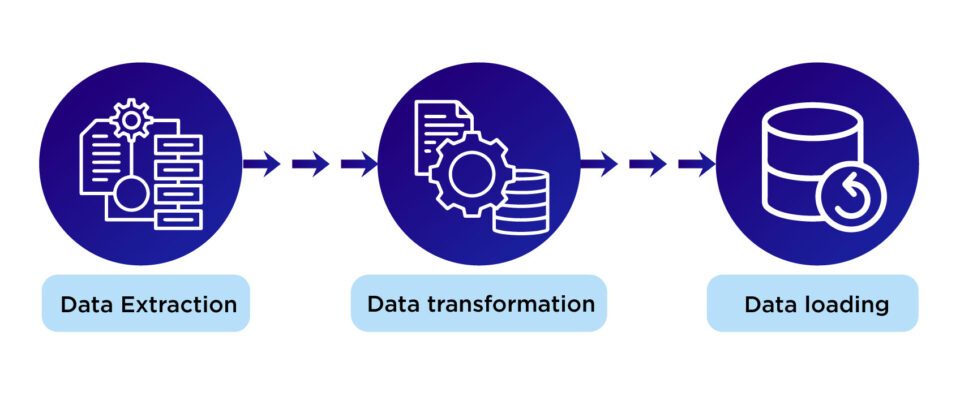Want to enhance your decision-making while handling data analytics and machine learning projects? We are here to help you! ETL!
The extract, transform, and load (ETL) procedure is used to prepare individual raw datasets in a structure and format that makes them more suitable for analytics, leading to more insightful results.
Let's dive into what ETL really means, along with its benefits and working process. Let's begin!
What is ETL?
It is a shortened form of Extract, Transform, and Load. It is a process in which data is integrated into a data warehouse. It's a method of integrating data that takes information out of several sources, unifies it into a single store, and then inserts it into a data warehouse system. It builds the base for machine learning and data analytics in a firm.
Simply, if we explain the three steps, then we can say ETL means -
1. Extract
A pre-planned subset of data can be extracted from a source, such as an XML file, a cloud platform, or a SQL or NoSQL database.
2. Transform
A data set's structure or format can be transformed to conform to the destination system's specifications. This is usually done in a staging area using techniques like computations, concatenation, and data mapping. To overcome the limitations of conventional data warehouses, the data must be transformed prior to loading.
3. Load
The act of putting data into a data warehouse so that BI or data analytics tools may evaluate it, is known as loading.
Benefits of ETL
- Precise and methodical data analysis takes place with the help of ETL. Following are its benefits.
- Faster and more reliable data analysis for a specific, pre-established use case.
- Improves accuracy and consistency by cleaning and transforming data.
- Simplifies data processing, making reports more rapidly accessible.
- Ensures effective management of big datasets by adapting to increasing data quantities.
Working Process of ETL

1. Data Extraction
Raw data is extracted from data sources, such as files and databases, and stored in a temporary staging area. Three popular techniques include full extraction, which pulls all data from the source system at once; incremental extraction, which only pulls new or modified data since the last extraction; and update notification, which tracks data changes and notifies pertinent systems or parties of them prior to data extraction.
Large data collections may be handled using this approach, which also helps stakeholders stay updated on data-related events.
2. Data transformation
Data transformation, which involves transforming data to better suit business needs and enhance data quality. Data deduplication, which eliminates duplicate records, and data cleaning, which fixes inaccuracies in data sets, are steps in this process.
Joins and tree joins provide unified retrieval and analysis by combining data from several databases according to relevant columns.
By aligning records according to shared properties or keys, merge transformation combines data from many sources. In ETL procedures, these transformations support the preservation of data integrity and enhance data quality.
3. Data loading
The last phase in the ETL process is data loading, which involves moving the converted data from the staging area into a data warehouse or other permanent storage system. BI and analytics employ this well-structured data.
Full load, batch load, bulk load, incremental load, and streaming are some of the data loading techniques. While batch load processes and loads data sequentially, full load loads all of the data from the source systems without taking into account incremental changes or updates. While incremental load loads fresh or modified data since the last ETL run, bulk load transfers a significant volume of data in a single batch process.
Applications that need real-time data for analytics or decision-making benefit greatly from streaming, which loads data almost instantly.
Conclusion
ETL is an important process for integrating and preparing data from multiple sources for analysis. By extracting, transforming, and loading data efficiently, organizations can ensure accurate insights, comply with regulations, and manage large datasets effectively, enhancing decision-making and driving business intelligence initiatives.
Through this blog content, we studied the process of ETL, and we hope that readers will have a better understanding of this term and its process after reading our blog. For more insightful and knowledgeable content, visit us at WisdomPlexus.
You may also like to read:
The Best 5 Data Analytics Tools for 2024
Benefits of Machine Learning in ERP




